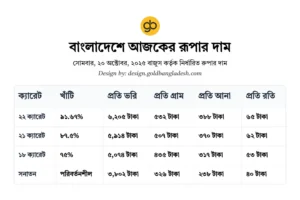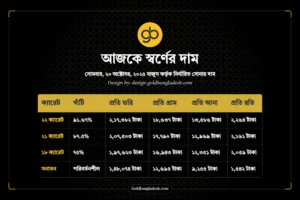Investing in precious assets—such as gold or diamonds—has long been popular in Bangladesh. With inflation rising, currency pressures, and limited domestic investment vehicles, many Bangladeshis look to tangible assets to preserve wealth.
Between gold and diamonds, which is the better investment in the context of Bangladesh? This article explores the advantages, disadvantages, risks, returns, and practical considerations when choosing between gold and diamond as investment options for Bangladeshis.
Precious Assets in Bangladesh
Before comparing gold and diamonds, here are some key facts and market context in Bangladesh:
- The gold market in Bangladesh has seen strong price growth: for example, in 2024 gold price per bhori (≈11.664 grams) increased by ~24.53% year-on-year. The Daily Star
- Gold is widely trusted culturally and traditionally as a store of value and liquidity.
- The diamond market in Bangladesh is strong and growing. The Bangladesh diamond market size is projected to grow at a CAGR (compound annual growth rate) around 12-13% during 2025-2029.
- However, there is also substantial smuggling in both gold and diamond sectors. E.g., according to Bajus (Bangladesh Jewellers’ Association), about Tk 250 crore worth of gold + diamond enter the country illegally per day. Annually, gold and diamond smuggling amounts are reported in the tens of thousands of crores of taka.
- High import duties on diamonds: Import duty for rough diamonds is very high (≈ 89 %) without bond facility; for smooth (processed) diamonds it can be ~151%. These high tariffs push many traders toward illegal import channels.
Given this context, any investment in gold or diamonds in Bangladesh must account for market distortions, regulatory risk, liquidity, and purity/authenticity.
Read More: Top 10 Best Gold Shop in Bangladesh
Gold as an Investment: Pros & Cons
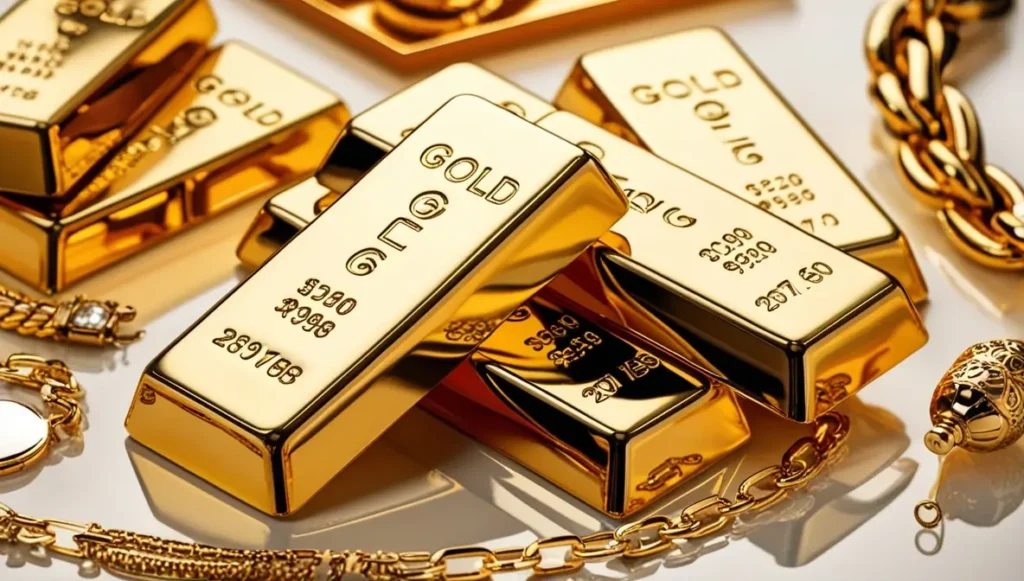
Advantages
- Inflation hedge & currency protection
As the Bangladeshi taka experiences depreciation and inflation remains high, gold maintains value better than many fiat or fixed income instruments. Investors often turn to gold when interest rates on bank deposits are low and inflation eats up savings. - High liquidity
Gold is widely accepted everywhere in Bangladesh. Smaller increments (coins, small bars) can be more easily sold in local markets, even in rural areas. The existence of many jewellers, gold shops, and established dealers adds to liquidity. - Cultural & psychological factors
Gold holds traditional value—wedding purchases, religious gifts, savings in gold jewellery—which gives it embedded demand regardless of pure return on investment. This demand base helps stabilize prices locally. - Better regulatory clarity & trust
While there are issues (purity, smuggling, storage), gold has more established regulations (e.g. hallmarking) than many parts of the diamond market in Bangladesh. It is easier for buyers to authenticate gold, especially in trusted jewellers. - Lower entry cost for smaller investors
You can purchase small amounts of gold (coins, small bars, jewellery) which makes it accessible for middle or lower income investors. Also, selling small units is more practical.
Disadvantages / Risks
- Making/fabrication costs and purity issues
Jewellery has high making charges, which are not recovered on resale. Purity of gold (karat, hallmarking) can vary; without hallmarking or trusted seller, risk of adulterated or impure gold. - Storage, security, and transaction costs
Physical gold needs safe storage, insurance, secure transactions. Costs of safe-keeping, potential theft are non-trivial. - Volatility & price adjustments
While gold is generally more stable than many other assets, its price in Bangladesh adjusts often (import cost, global price, currency rate). For instance, in 2024, local gold price was adjusted many times, with more upward adjustments than downwards. - No yield / income
Gold does not provide periodic income (like dividends, rent). The return is only via appreciation and sometimes through resale. - Opportunity cost
If you tie up capital in gold, you may miss out on higher returns from equities, real estate, or other businesses.
Diamonds as an Investment: Pros & Cons
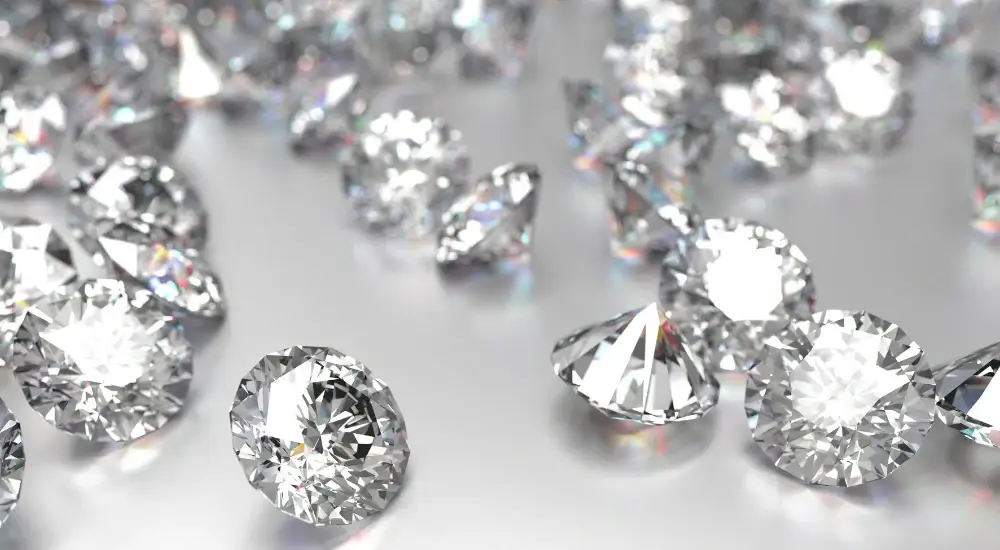
Advantages
- High potential value per unit
Diamonds, especially high quality ones, can have high per-carat values. For those with sufficient capital, a single stone may appreciate well in luxury markets. - Scarcity & prestige
The rarity, craftsmanship (cut, clarity, colour), and brand can add prestige and sometimes price premiums over basic commodity value. - Diversification
Diamonds are less correlated with many financial markets; may serve as a diversification asset in a portfolio of precious metals, real estate, stocks. - Growing demand and market size
The diamond securities / jewellery market in Bangladesh is growing fairly quickly. The local demand for diamond jewellery is increasing with rising purchasing power among the middle class. Forecasts suggest a CAGR ~12-13% in coming years. 6Wresearch
Disadvantages / Risks
- Very high import duties & smuggling risk
Duties on diamond imports are extremely high—rough and polished. This pushes many into illegal import channels, which introduces serious risk (legal, authenticity, quality), and affects pricing. Dhaka Tribune - Authenticity, quality, and grading issues
Diamond price depends on the “4 Cs”: carat, cut, clarity, colour. Many buyers in Bangladesh face difficulty in verifying these; fake diamonds, artificial stones like moissanite or zircon are entering the market. - Lower liquidity
Selling diamonds can be harder than gold. Finding buyers for specific grades, certified stones, or getting fair market value can be slower. Transaction costs can be high. - High minimum investment needed for “good” stones
To benefit from diamond appreciation, you usually need high-quality stones, which means higher upfront cost. Smaller, lower quality diamonds may not appreciate significantly after factoring in import duties, dealer margins, etc. - Volatility in global diamond markets
Demand for luxury goods can fluctuate with global economic cycles; changes in fashion, consumer preferences, supply chain disruptions impact diamond prices significantly.
Comparative Analysis: Gold vs Diamond in Bangladesh
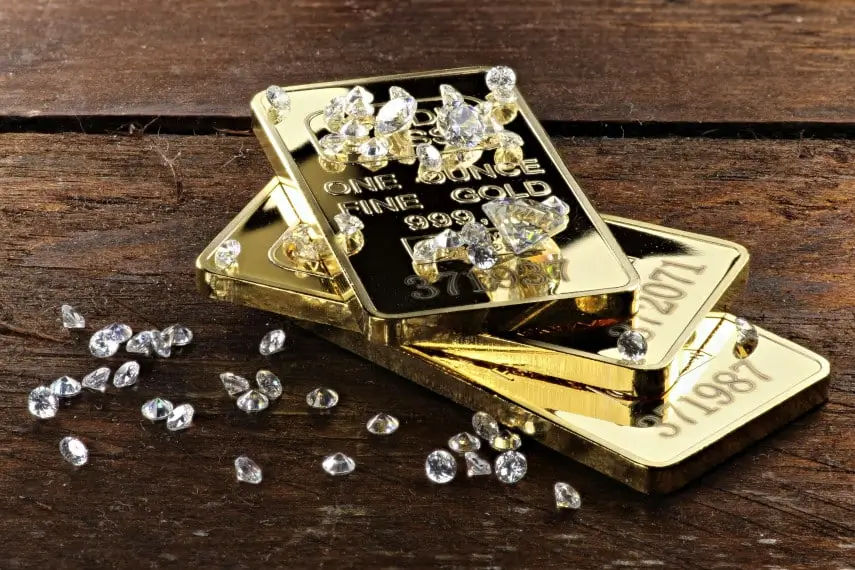
To decide between gold and diamonds, it helps to compare them across key investment criteria in the Bangladesh context.
| Criteria | Gold | Diamond |
|---|---|---|
| Liquidity | High — easy to buy/sell in many shops; gold coins/bars have standard global value | Lower — need matching buyer for specific grade; resale can take time |
| Entry cost | Can start small (coins, small jewellery) | Requires higher investment for quality stones to get meaningful appreciation |
| Transparency / easy valuation | Easier if hallmarked; standard purity; price often tied to global rates + local import cost | More complex: grading of cut, colour, clarity; authenticity is a major concern |
| Risk of counterfeits / quality issues | Moderate (especially in jewellery) but mitigated by hallmarking, reputable sellers | High — fake stones, misrepresented grading, illegal sourcing are significant issues |
| Carry / storage cost | Storage, security, insurance; jewellery has making charges which are not recovered | Similarly requires secure storage; risk of damage; but premium per unit means smaller physical size for same value sometimes reduces storage burden |
| Legal / policy risk | Duty / import tax volatility; smuggling issues; currency and regulatory risk | Same + more: import duty very high; policy uncertainty; duty evasion risk; quality control / import documentation risk |
| Potential growth / return | Historically solid; safer appreciation; acts as hedge during currency inflation | Higher upside for rare, high-quality stones; but more speculative and sensitive to global luxury demand |
| Cultural demand | Very strong (weddings, religious, ornament); societal trust | Growing, especially urban middle and upper class; less universal than gold traditionally |
What the Data from Bangladesh Suggests
- In 2024, gold in Bangladesh rose ~24.5% year-on-year in price. That is a strong return in local currency terms.
- Many middle and upper-middle income individuals increased purchases of gold coins and small bars rather than ornaments. This suggests demand for investment form over ornament form.
- For diamonds: market reports indicate growth, but also that large portions of trading (import, distribution) are informal or illegal. This means official data may understate risks or costs.
Practical Recommendations for Investors in Bangladesh

If you are considering investing in gold or diamonds, here are practical tips tailored for the Bangladesh context:
- Set clear objectives
Are you looking for capital preservation, inflation protection, or speculative gains? What is your time horizon (short-term, medium, long)? Your goal influences whether gold or diamond is more appropriate. - Buy quality, certified products
— For gold, insist on hallmarking; check seller’s reputation.
— For diamonds, insist on certified stones (GIA, IGI etc.), get documentation of cut, clarity, colour. Avoid “look alike” stones if your aim is investment, not decorative. - Mind import duties, taxes & legal risks
Because diamond duties are so high, many importers smuggle; buying illegally sourced products risks seizure, or lower resale value abroad. Gold may also have duty/tax issues; stay within legal, documented channels. - Consider liquidity
If you might need to exit or liquidate quickly, gold probably offers more immediate liquidity. Diamonds may take longer to find buyer and get fair price. - Storage & insurance
Physical assets need safe storage. For gold, small bars or coins might be more manageable. For diamonds, storing certified stones safely (safe deposit boxes, insured vaults) is critical. - Portfolio diversification
Don’t put all your capital into either gold or diamonds. Diversify also across financial assets, real estate, possibly stock / business investments where feasible. The more diversified, the lower risk. - Monitor global & local market trends
Global gold prices, currency fluctuations (especially USD/Taka), inflation, import policy changes, demand in luxury goods all affect diamond values. Staying informed helps you time enters/exits better. - Risk management
Be aware of counterfeits, adulteration, fraudulent sellers. Especially for diamonds, use lab certification. For both, ensure you can verify and insure.
Which is Likely Better for Which Investor?
Based on the above, here’s a summary guide:
- If you have moderate capital and want something relatively safe, liquid, and with known risks, gold is more suitable.
- If you are wealthier, willing to take more risk, and interested in potentially higher returns (but more volatility and longer investment horizon), diamonds have potential benefits.
- For short to medium-term preservation of purchasing power, gold is likely better. Diamonds often require longer time horizons to realize value appreciation.
- For people who value prestige, aesthetic display, or luxury, diamonds may provide non-financial satisfaction (which can be considered part of their “return”).
Conclusion
In sum, for most investors in Bangladesh—especially those with moderate savings and seeking preservation of wealth under inflation—gold tends to be the safer, more reliable investment. Diamonds may appeal to wealthier investors looking for higher upside, but the risk profile is significantly higher: from import duty & policy risk to authenticity & liquidity challenges.
If you like, I can run and provide quantitative models comparing projected returns on gold vs diamond over, say, 5 or 10 years in Bangladesh, factoring in duties, storage, resale costs etc., to help you decide more precisely. Do you want me to do that?




